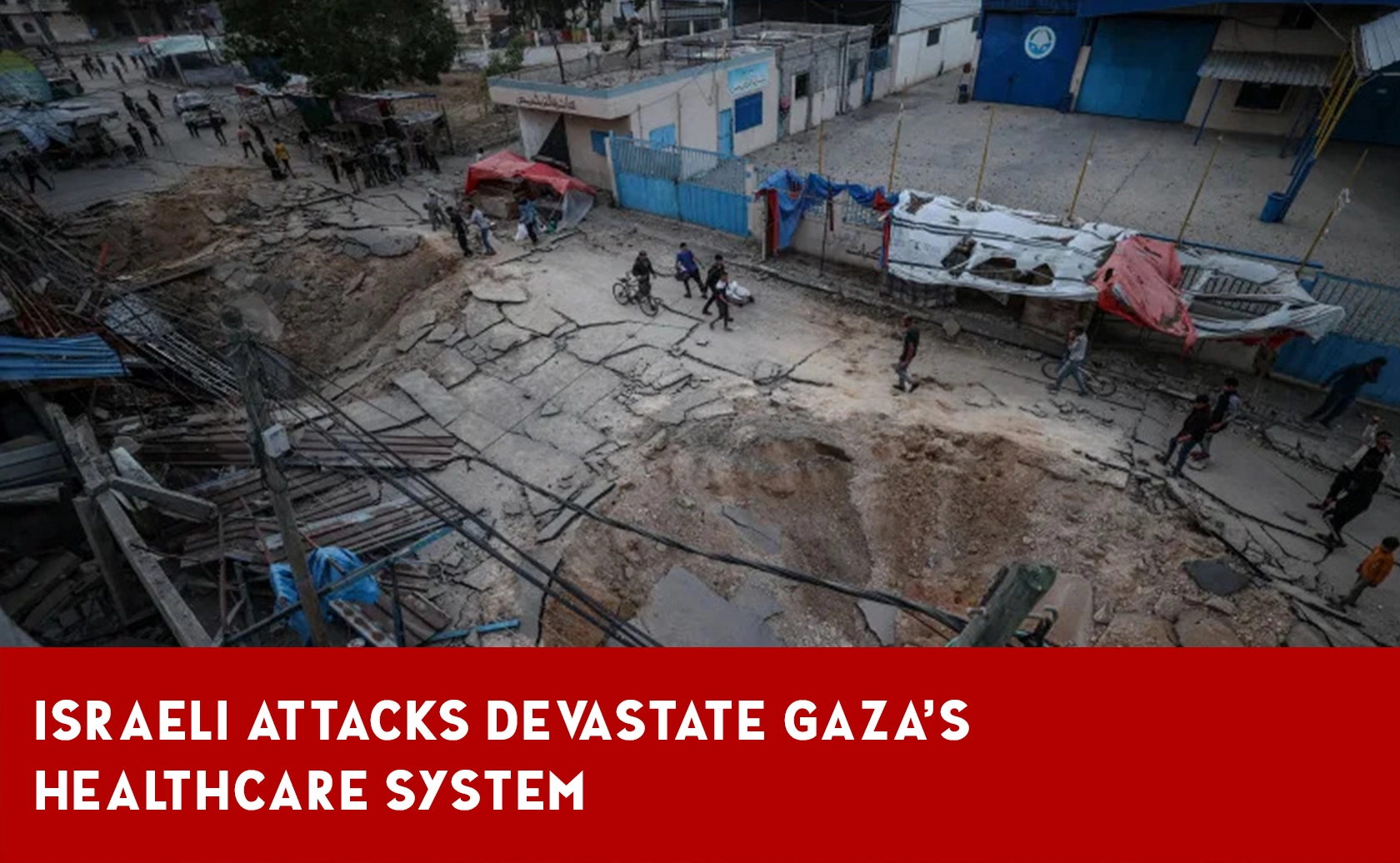The Israeli military’s sustained bombardment of Gaza’s healthcare infrastructure has reached catastrophic proportions, with hospitals systematically targeted, besieged, and rendered inoperable. Over the past 18 months, Israel’s campaign has decimated medical facilities across the enclave, leaving tens of thousands of critically ill and injured Palestinians without access to life-saving care. The recent escalation-marked by drone strikes on the Indonesian Hospital in northern Gaza and a renewed ground invasion dubbed “Gideon’s Chariots”-has intensified fears of a deliberate strategy to dismantle Gaza’s healthcare system. This report examines the systematic destruction of medical infrastructure, the humanitarian consequences of Israel’s siege, and the legal and geopolitical implications of these actions.
Table of Contents
ToggleCurrent Escalation: Targeted Assaults on Healthcare Infrastructure
Siege of the Indonesian Hospital
The Indonesian Hospital, one of northern Gaza’s last functioning medical facilities, has been a focal point of Israel’s recent offensive. On May 18, 2025, Israeli drones launched a sustained assault on the hospital, damaging critical infrastructure and forcing its closure13. Dr. Muhammad Abu Salmiya, director of al-Shifa Hospital, described the attack as part of a broader escalation: “Medical teams are struggling with limited staff and resources. The Indonesian Hospital’s closure eliminates any hope for patients in the north”1. Gaza’s Health Ministry confirmed that Israeli forces surrounded the Beit Lahiya facility, blocking entry for patients and staff and creating “panic and chaos”1. With this closure, all hospitals in northern Gaza are now nonoperational, leaving approximately 500,000 residents without access to emergency care15.
Southern Gaza’s Collapsing Medical Network
Simultaneous strikes have crippled hospitals in central and southern Gaza. On May 14, Israeli warplanes targeted the European Gaza Hospital in Khan Younis, killing six and destroying its courtyard6. Days later, a missile barrage hit the Nasser Medical Complex, killing two, including a journalist3. These attacks follow a pattern documented since March 2025, when Israel resumed bombing after a two-month ceasefire4. The World Health Organization (WHO) reports that 686 attacks on medical facilities have occurred since the conflict’s onset, with 36 hospitals damaged and 19 rendered inoperable6.
Historical Context: Systemic Erosion of Medical Capacity
Timeline of Hospital Attacks
Israel’s targeting of healthcare infrastructure is not incidental but part of a documented strategy. Key milestones include:
March 18, 2025: Resumption of airstrikes after ceasefire collapse, targeting Rafah, Khan Younis, and Gaza City. The Al-Tabi’in School and a prison in Al-Shati refugee camp were struck, killing 36 detainees4.
October 2023–Present: Consistent reports of hospitals used as military shields by Hamas, per Israeli claims, though evidence remains contested67.
May 2025: “Gideon’s Chariots” offensive expands ground operations, with leaflets dropped over Gaza depicting biblical conquest imagery2.
Depleting Medical Resources
Gaza’s healthcare system, already strained by a 17-year blockade, now faces existential collapse. Hospitals lack electricity, anesthesia, and basic supplies like gauze. Dr. Marwan Sultan, director of the Indonesian Hospital, reported that oxygen reserves were exhausted within hours of the siege, leading to preventable deaths15. The WHO notes that 70% of Gaza’s medical staff have been displaced, injured, or killed, compounding the crisis6.
Humanitarian Catastrophe: Civilian Suffering Under Siege
Casualty Figures and Displacement
Since March 2025, Israeli strikes have killed over 53,339 Palestinians, including 14,800 children, and injured 121,0345. The May 18 al-Mawasi tent camp bombing alone killed 36 displaced Palestinians, many burned beyond recognition5. Over 1.9 million Gazans-85% of the population-are internally displaced, with 90% facing acute food insecurity35.
Blockade and Aid Restrictions
Israel’s siege has blocked all humanitarian aid since March 2, 2025, exacerbating famine conditions. Hospitals report soaring rates of malnutrition-related complications, with infants dying from dehydration and preventable infections5. The UN warns that 30% of children under two in northern Gaza suffer acute malnutrition, a figure unmatched in modern conflicts5.
Military Justifications and Legal Repercussions
Israel’s Claims vs. International Law
Israel asserts that hospitals are legitimate military targets due to Hamas’s alleged use of tunnels beneath them. The IDF claims the European Hospital housed a Hamas command center and targeted Muhammad Sinwar, brother of Hamas leader Yahya Sinwar36. However, international law unequivocally prohibits attacks on medical facilities unless they are used for “harmful acts,” a threshold unverified by independent investigators16.
Condemnation and Accusations of Genocide
A UN commission concluded in September 2024 that Israel’s attacks constitute “a deliberate strategy to dismantle Gaza’s healthcare system,” potentially amounting to genocide under the Geneva Conventions6. Human rights groups, including Amnesty International, accuse Israel of using starvation as a weapon of war-a war crime5.
Diplomatic Stalemate and Political Dynamics
Ceasefire Negotiations and U.S. Complicity
Mediated talks in Qatar have stalled, with Israel demanding Hamas’s disarmament and Hamas insisting on a full withdrawal from Gaza5. The U.S. faces mounting criticism for supplying Israel with $3.8 billion in annual military aid, including 2,000-pound bombs used in hospital strikes7. Secretary-General António Guterres condemned the expanded ground invasion, urging an immediate ceasefire5.
Internal Israeli Divisions
Netanyahu’s government faces pressure from far-right factions to reject negotiations. Security Minister Itamar Ben-Gvir demanded withdrawal from Doha talks, insisting on Hamas’s total defeat5. Conversely, hostage families warn that military operations endanger captives, with 124 Israelis still held in Gaza35.
Conclusion: A Crossroads for International Accountability
Gaza’s healthcare collapse epitomizes the broader humanitarian disaster engineered through systematic military and economic warfare. The international community’s failure to enforce arms embargoes or sanctions on Israel underscores a glaring double standard in human rights enforcement. Without urgent intervention, Gaza’s 2.3 million residents face a future of mass preventable deaths-a reality that demands not just condemnation but actionable accountability under international law.




